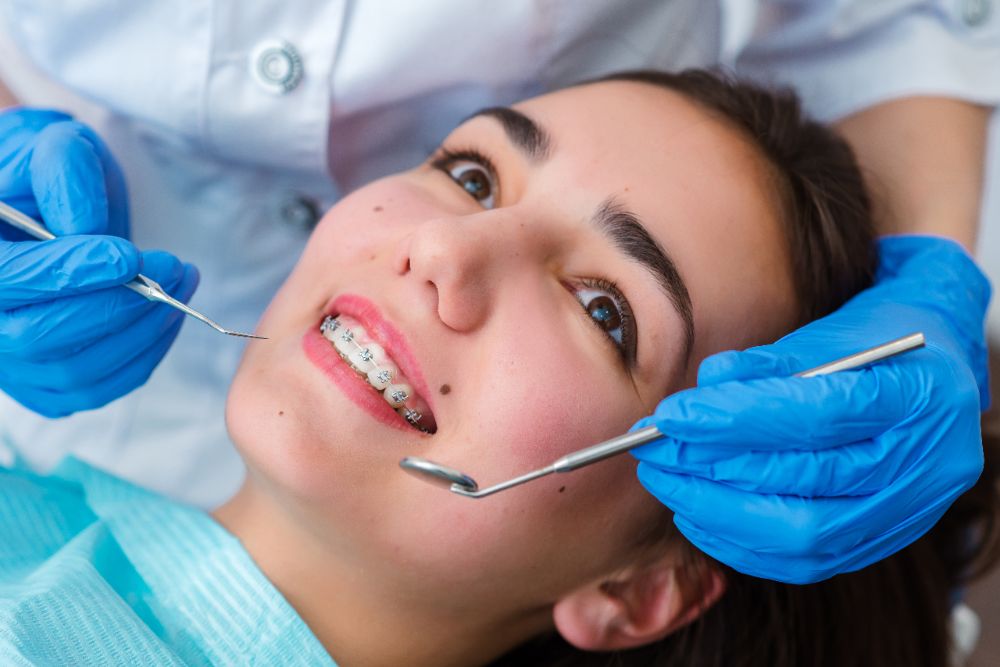How Cumming Orthodontics Can Change Your Smile with Invisalign and Braces
How Cumming Orthodontics Can Change Your Smile with Invisalign and Braces
Blog Article
Comprehensive Guide to Orthodontics Procedures for Remedying Oral Misalignments
Understanding the complexities of each procedure, including their mechanisms, benefits, and prospective disadvantages, is important in making informed choices about one's orthodontic treatment. As we browse through the thorough guide to orthodontic treatments for dealing with dental misalignments, the elaborate details of each approach will certainly unfold, shedding light on the course toward a unified and functional oral placement.
Orthodontic Procedures Introduction

Routine changes and surveillance are essential parts of orthodontic treatment to make sure progress is on track and to make any type of necessary modifications along the means. By going through orthodontic procedures, individuals can not only accomplish a straighter smile however likewise improve their overall oral health and function.
Conventional Braces: How They Function
When taking into consideration orthodontic treatments for oral misalignments, traditional braces stick out as a reliable technique for dealing with teeth positioning. Traditional braces contain braces, cables, and bands that interact to use constant stress on the teeth, gradually relocating them into the preferred alignment. The brackets are affixed to the teeth utilizing a special adhesive, and the cords are threaded through the brackets. By readjusting the tension of the cords, orthodontists can control the instructions and force related to each tooth, assisting them right into proper positioning with time.
As stress is applied to the teeth via the dental braces, the bone surrounding the teeth is improved to support the brand-new tooth settings. Patients will need routine modifications at the orthodontist's workplace to make certain the dental braces continue to apply the appropriate stress for efficient teeth activity.
Invisible Aligners: Cons and pros
These clear, customized trays are practically unseen when worn, making them an appealing alternative for individuals seeking a more aesthetically pleasing orthodontic treatment. People can eliminate the aligners before eating or cleaning their teeth, minimizing the threat of food getting stuck in the home appliance and simplifying the cleaning process.

Surgical Orthodontic Options
Surgical treatments in orthodontics present feasible options for attending to complicated dental misalignments that might not be efficiently fixed through standard orthodontic treatments. While invisible aligners and conventional braces can fix numerous orthodontic concerns, particular cases need surgical intervention to attain ideal outcomes. Surgical orthodontic choices are commonly recommended for extreme malocclusions, significant jaw discrepancies, and instances where the underlying bone framework requires adjustment to attain correct placement.
One usual medical orthodontic procedure is orthognathic surgical treatment, which involves repositioning the jaws to deal with functional issues such as trouble speaking or eating. This surgical procedure is typically carried out in collaboration with an orthodontist who helps line up the teeth before and after the procedure. Surgical orthodontics may likewise entail treatments to reveal influenced teeth, get rid of excess periodontal cells, or improve the jawbone to create an extra unified facial profile.
Prior to taking into consideration surgical orthodontic options, individuals undergo a detailed assessment to identify the requirement and potential advantages of such treatments. cumming invisalign. While surgical procedure may appear complicated, it can significantly improve both the feature and aesthetic appeals of the smile in situations where traditional orthodontic treatments drop short
Retainers and Post-Treatment Treatment

Post-treatment care entails adhering to the orthodontist's instructions vigilantly. This might consist of proper oral health techniques, attending follow-up consultations, and wearing the retainers this hyperlink as prescribed. Failure to follow post-treatment treatment guidelines can result in relapse, where the teeth slowly move back in the direction of their initial positions. Regular retainer wear, good oral health, and regular oral examinations are vital for preserving the results accomplished through orthodontic surgical procedure and guaranteeing the long-lasting security of the remedied oral placement.
Conclusion
To conclude, orthodontic treatments provide various choices for fixing oral misalignments. Typical dental braces utilize steel braces and wires to shift teeth into correct positioning. Unseen aligners supply an even more very discreet choice however may not appropriate for all instances. Surgical orthodontic choices are offered for more serious misalignments. Retainers are typically used post-treatment to preserve the new placement. Generally, orthodontic procedures can properly boost dental health and wellness and aesthetic appearance.
As we navigate through the comprehensive guide to orthodontic treatments for correcting dental misalignments, the complex details of each approach will unravel, losing light on the path towards a unified and functional oral placement. - aligners
One of the most typical orthodontic treatments is the use of dental braces, which consist of steel brackets and cords that apply mild stress to gradually move teeth into the preferred setting.When considering orthodontic therapies for dental imbalances, standard braces stand out as a tried and true method for correcting teeth placing. In addition, invisible aligners may not be appropriate for complex orthodontic concerns that call for more significant teeth motion, as they are typically recommended for mild to modest cases. Retainers are tailor-made orthodontic devices made to hold teeth in their dealt with placements after the conclusion of orthodontic treatment.
Report this page